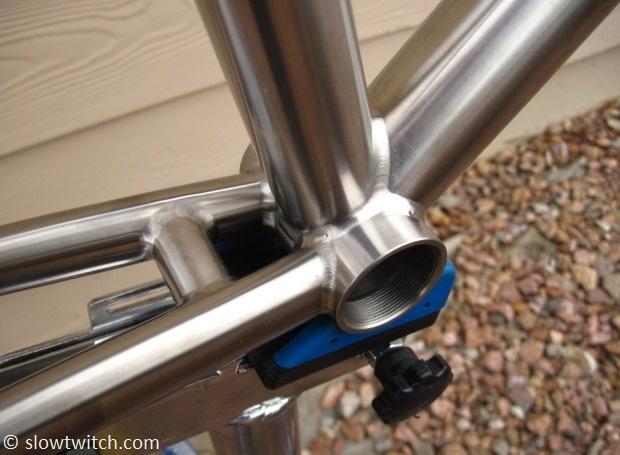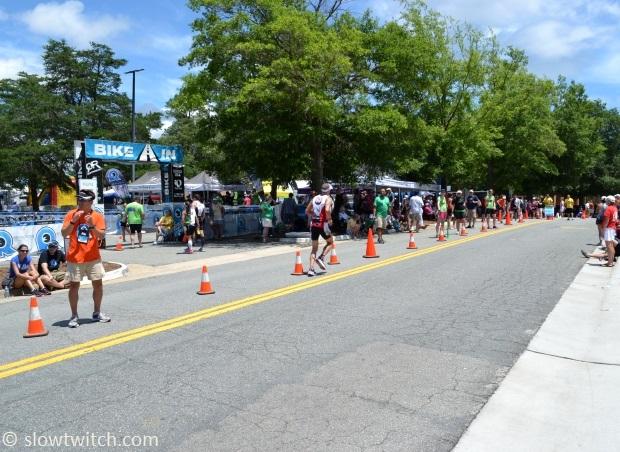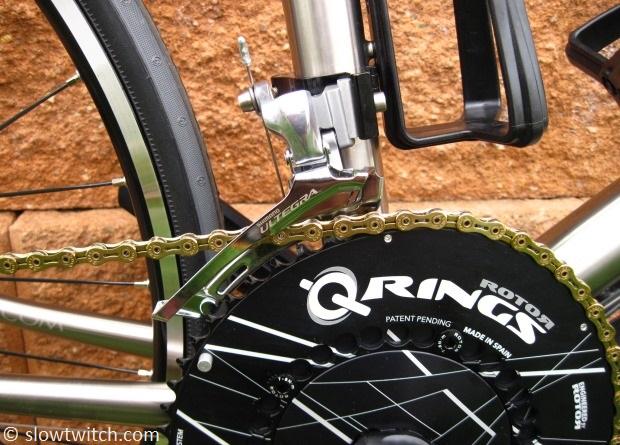Slowtwitch Mailbag – 7
This is the Slowtwitch Mailbag, where we answer readers’ triathlon-related questions. To submit your own question, send an email to us at: mailbag@slowtwitch.com
This edition happens to cover two questions from the same reader (thanks, Jeff!). The first is about course accuracy and GPS. For this, we turned to Morgan Christian, who runs realtimeathlete.com. He is a technologist, marathon swimmer, and active multi-distance triathlete residing in Encinitas, CA. You can find Morgan on Twitter via @mchristian or his personal website http://morganchristian.com and http://realtimeathlete.com.
Jeff writes,
“I notice that in many races – especially the smaller ones – that the distances published do match up to what we see on our bike computers or GPS watches. Swim distances are really bad in many of my local races as well as some bike distances. At college nationals in Tempe this year, the bike segment was 4 or 5km short. This was really surprising for a national event. I would love to hear your input and experiences with incorrect distances, race promoter’s comments, and maybe even a bike speedo vs. GPS comparison for accuracy.”
That’s a mouthful, so we’ll let Morgan handle it from here:
“For most governing bodies, the [policy] on course measurement hinges on two core principles. These are 1) measure the shortest route possible and 2) measure as accurately as possible.
When they say ‘shortest route possible’, they are referring to the shortest path across the expanse. Through a series of turns, the shortest route is a straight line across the tangents (which is to say – you attempt to cut a straight line from curve to curve along the route).
With every race, especially open water swims with non-permanent markers, the measurement effort is truly best effort. For example, if you have an out-and-back lake swim, the race director might opt to use a measured GPS coordinate to define the turnaround point. In the best conditions, GPS locations are stated to be generally accurate to around 15 meters (sometimes better, sometime worse). In this example, the race director could be off by a few meters in one direction or another causing the swim to be long or to be short.
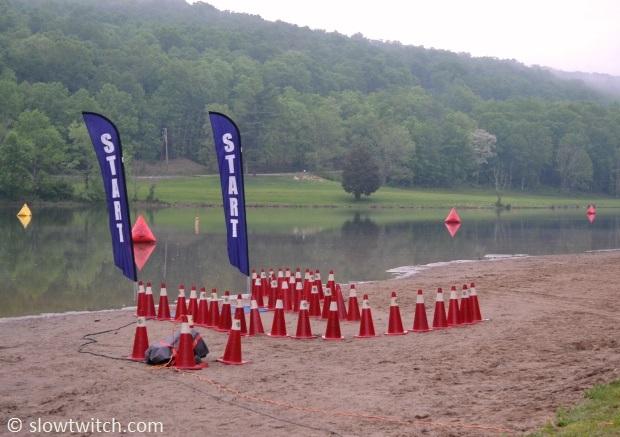
There is also an influence of route terrain and safety. Road construction, changes in road accessibility, placement of aid stations, optimal start and finish areas can all have some influence on the flow of the route in relation to the measurement. Even up to the last minute, a race director may need to make a judgment call that adds or subtracts some amount from the stated distance.
In terms of your own measurement, there are pluses and minuses to both fixed bike computers and GPS training devices. Fixed computers are typically driven by a fixed sensor (usually a magnet) that rotates with one of the wheels and passes by another sensor on the frame. Each computer manufacturer will have guidelines for setting these devices up to get the greatest accuracy. By and large they all tend use the rotation of the wheel with a predefined tire size to figure out what the distance travelled is. In my experience, these are reasonably accurate if installed by the manufacturers’ guidelines. As I mentioned, GPS devices are stated to be accurate to about 15 meters – however, in my experience the accuracy tends to be relatively constant if the 'conditions' don't change too much giving you a pretty accurate measurement of distance.
Most of the complaints I have heard are that the GPS captured distances are a bit longer than the stated route. The first suspect in that is the race line. I have yet to be in any event (triathlon, running, cycling) where I had clean and exact access to the racing line which should be consistent with the 'shortest route possible'. If you are slicing your way through the field you can be gathering up extra distance crisscrossing the width of the path. Combined with any GPS or fixed bike computers’ inaccuracy, the amount of extra distance can add up.
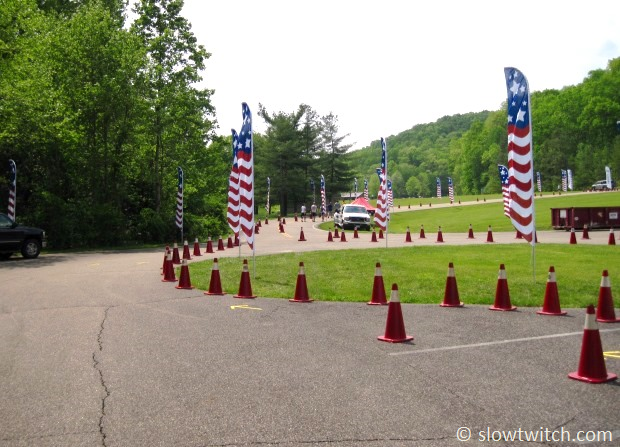
In your case, being short by several kilometers is all about context. If you are off by 3k in a 60k race, the deviation is much less than if you are off by 3k in a 10k race. To rule out your device as the real offender, find an accurately measured area (400m track might be a good option) and see how your device performs. You might also try comparing notes with other participants to see if they experienced the same differences.”
—
Here is the second part of Jeff’s email:
”I just purchased a new bike and I am speechless as to how fast I am now. I went from a stock Specialized Allez off Craigslist that dated from ~2006 to a new stock 2012 Cervelo S5. I am 58 and have been racing for 5 years. I am a slow age grouper in a very fast age group. I just did my first Olympic distance and averaged 21.1 mph on the bike. My previous best at this distance was in the low 19’s. If anyone – even you guys – told me that I could buy that much speed I would have laughed at you. A lot! So what’s going on here? Talking to my friends that race, lots of them have seen large speed improvements with high-end bikes. I would have never imagined this kind of gain. So what’s going on with this old man?”
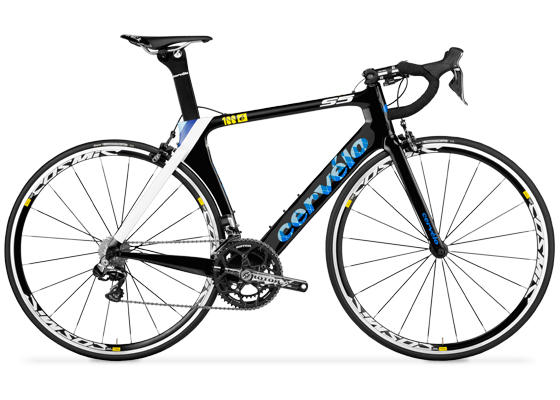
Above image © Cervelo
What’s going on, old man?! You’re getting faster, that’s what! It’s never too late to improve.
What’s actually going on is this – a lot of things. There are too many cooks in the kitchen to give you a single answer. Changing from one bike to another can have a huge number of changes that can be positive or negative, and many of them actually have very little to do with the frame construction. Let’s lay out some things that might be different between two different bikes aside from brand and age:
-Frame size
-Frame geometry
-Whether or not you paid for a professional fit on that bike
-Crank length
-Gearing (chainring size, cassette size, wheel size)
-Tire/tube brand, model, material, construction, and age
-Wheel specifications – weight, spoke type (aero or not), spoke count, rim width, rim depth
-Saddle choice
-Pedal/cleat choice and setup
-Condition of all bearings – bottom bracket, derailleur pulleys, wheels
The list could go on. The key point to understand is that the bulk of the ‘speed gain’ almost never comes from the most usual suspects. “My new bike weighs two pounds less and I gained two miles per hour… makes perfect sense!”… “This brand has more go-go juice than that other brand – it’s just faster!”
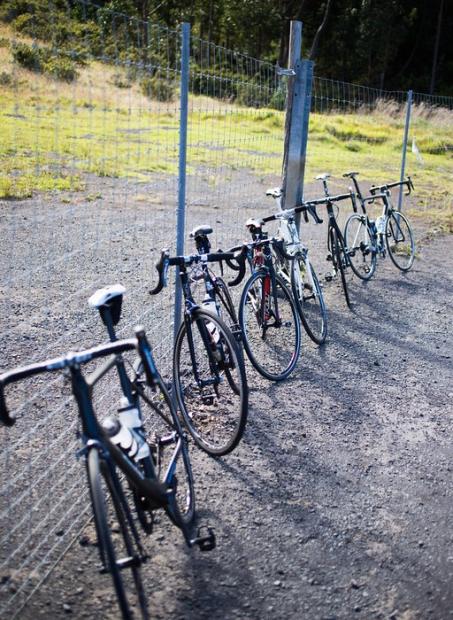
Above image © Eric Wynn
See my point?
The biggest factor is your fit aboard each bike, and how all of the ‘touch points’ interact with you. Perhaps your old bike had cranks that were too long, chainrings that were too big, a saddle that you weren’t crazy about, heavy wheels with round spokes, and contaminated bottom bracket bearings that were causing extra drag. Perhaps the new bike has a geometry that is simply better suited for you. Did you pay for a fit? Are there nicer wheels and tires on it? If your old tires had a high coefficient of rolling resistance (Crr), and had worn significant flat spots (causing a real aero penalty), changing to a new modern tire with no flat spot and better Crr could account for a lot of your gain.
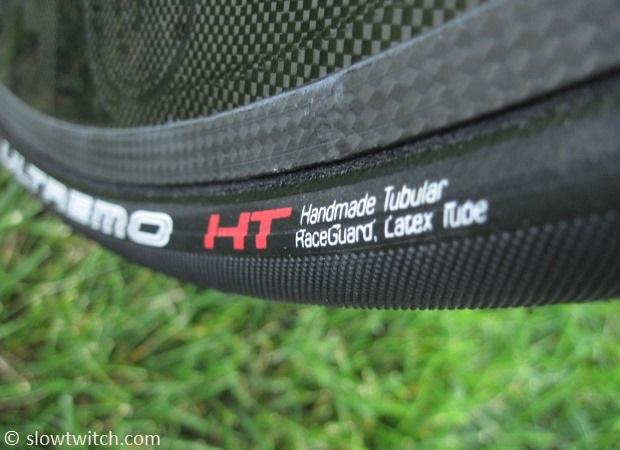
Of course, there is a gain from the frame itself. The Allez is not a bad bike at all, but I think it’s safe to say that the new S5 is more aerodynamic (and probably lighter, too). The two frames are at completely different price points, so it only makes sense that you should expect a gain with the more expensive product.
The last big unknown is your fitness. A good portion of your improvement is likely due to your training and greater experience in the sport. I should also ask – were both of your average speeds captured on the same course? Were the conditions the same? Where is the speed number coming from – a GPS, a bike computer, or your time over the stated course distance? As discussed in your first question, all of these can influence the accuracy of your distance and speed.
If you really want to closely evaluate performance gains from products, you need to control as many variables as possible and only make one change at a time. It sounds like you made a lot of changes at once and are very pleased with the result, so I say: Keep on pedaling and enjoy it!


